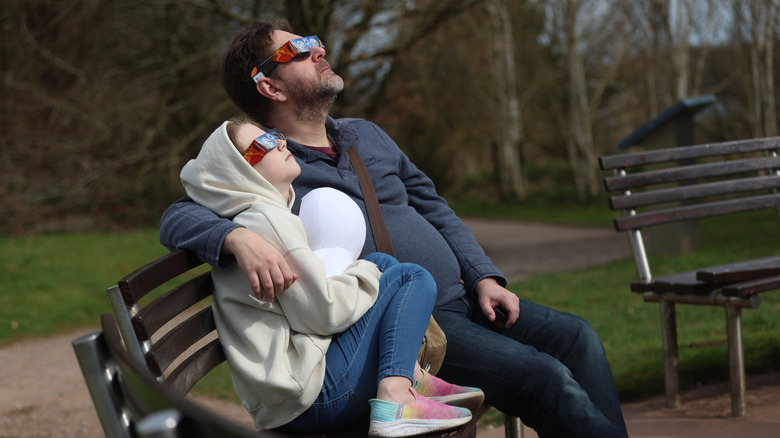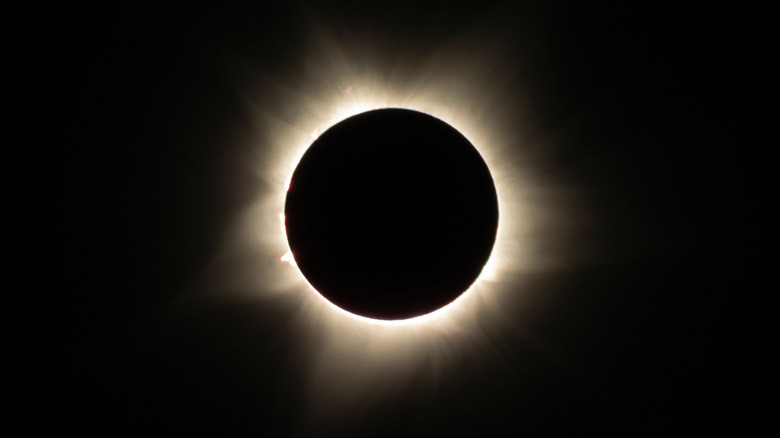Most Solar Eclipse Tracking Maps Are Wrong: Here's How To Actually Track Its Path
Observing a solar eclipse is technically possible from a wide area tracing the sun's path, but a total solar eclipse is the end boss of the experience. For those chasing that view, solar eclipse maps are critical. They show the path of the sun, allowing chasers to pinpoint where they should be at certain times. There's one big problem with them, though, at least if you're looking to be in the path of totality — places where a total eclipse is visible. Solar eclipse maps are imprecise. They don't match up exactly, because the sun's size is still under debate, so any calculations are out of date. That kind of nuance might have been useful to know before the September 2025 solar eclipse, regardless of the whether it was partial or not.
The original eclipse paths were created using something called Besselian elements. They are a set of parameters that follow the assumption that spherical bodies like the sun have a fixed radius. Unfortunately, some of the values used are outdated, which means solar paths traced on a map are inaccurate. The original values claim the sun's solar radius is a size of 959.63 arc seconds — about 432,000 miles — when in reality, it's more like 959.95 arc seconds, a difference of plus or minus 0.05 arc seconds. On Earth, that difference can shift the path of totality about 2,000 feet in varying directions. At the moment of an eclipse, if you're 2,000 feet off center and hoping to catch a glimpse of a total solar eclipse, it's not going to happen. You can understand why this is a problem. Don't fret, though. You can use the Basselian Elements team's maps to properly track the path, and they even have a mobile app.
Why are Basselian Elements Team maps more accurate?
Luca Quaglia and his crew, the Basselian Elements Team, has been working for over a decade to accurately track solar eclipses visible from here on Earth through rigorous testing. The team travels to the edge of each eclipse path, then they employ a sophisticated system to find the true solar radius values. They use the information they collect to better estimate the solar eclipse path as the sun's light and moon's shadow trace across the surface of the planet. As a result, the new maps include what's called a "zone of uncertainty," providing a more accurate estimation of where eclipse viewings should line up.
In league with a mathematician, John Irwin, Quaglia and his team are working on developing new 3D computational methods that also factor in Earth's natural terrain, including peaks and valleys which could alter the path. The reason? Traditional maps are flat, with straight lines, but Earth's geography is anything but flat. These new maps would take that into account and trace a more accurate solar eclipse path. Those maps are available through the Eclipse Countdown app.
In other words, you could potentially take advantage of the new maps — and their more accurate information — to hunt down the path of a total eclipse yourself. Road trip, maybe? The next total solar eclipse won't happen until August 2026, actually, so there's time to plan. Also, do yourself a favor and make sure you know how to easily spot if solar eclipse glasses are fake. It will come in handy and save your eyesight, when August 2026 rolls around.

